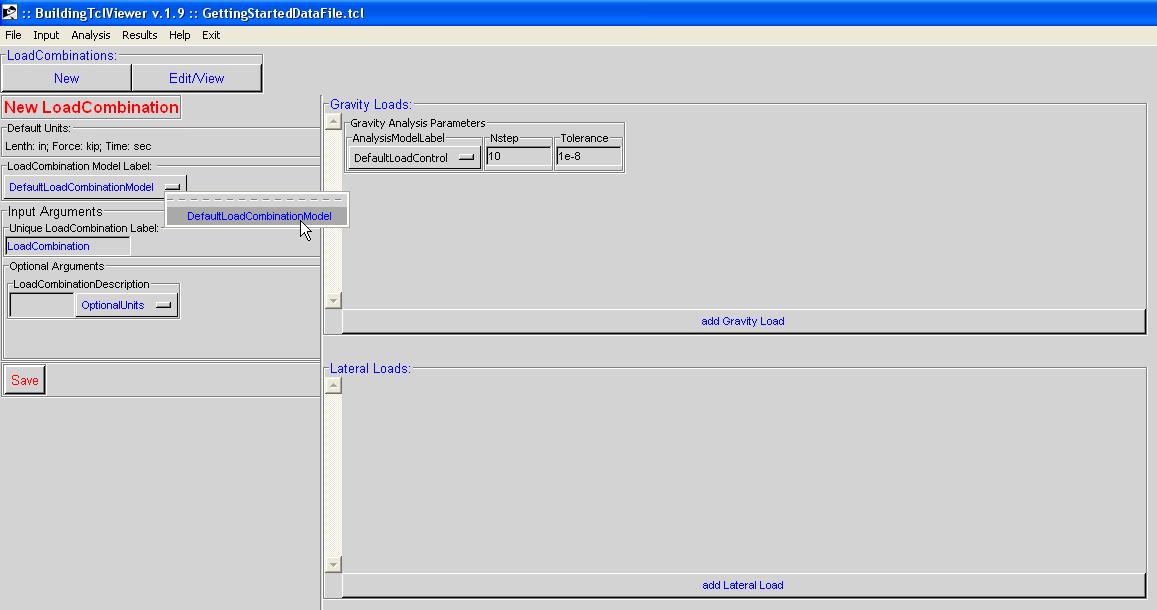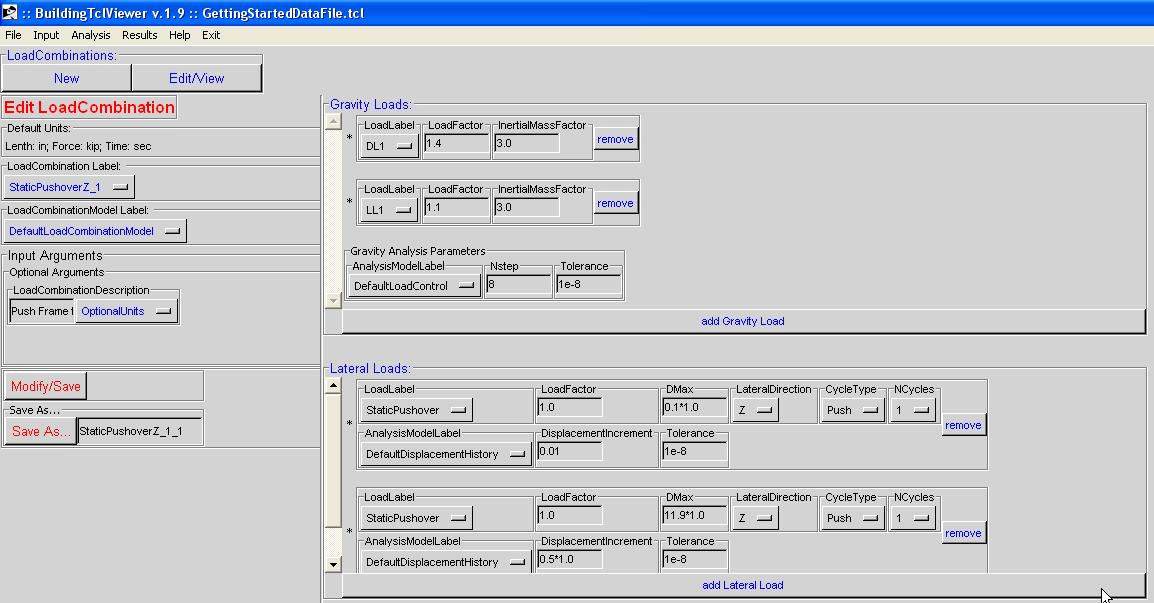BuildingTclViewer Input Menu -- LoadCombination

A LoadCombination is the final step in defining the loading and analysis. It uses previously-defined Loads and previously-defined AnalysisModels.
In the current release, there is only one LoadCombinationModel: DefaultLoadCombinationModel. The user is required to select it to maintain consistency with the rest of the input.
In the solution procedure, the program performs the following steps 0. Define the Model Nodes and Elements -- (described elsewhere)
- Gravity Loads
1. For each Gravity Load, one at a time:
- 1a. Calculate nodal masses based on the LoadFactor and the InertialMassFactor defined in the LoadCombination
- 1b. Calculate nodal vertical forces based on the LoadFactor defined in the LoadCombination
2. Add up all masses and gravity loads for each node. 3. Define OpenSees nodal Masses and Loads in one load case 2. Perform Eigen analysis to determine the first three periods of the model. The current release prints this output to the OpenSeesTk window. 3. Perform Load-Controlled analysis using the AnalysisModelLabel specified in the LoadCombination.
- Lateral Loads
4. Define Load and Analysis parameters and perform the analysis for each Lateral-Load case in sequence.
- NOTE
- Control of a number of Load and AnlysisModel Arguments has been made available at the LoadCombination level. The values specified at this level supercede the previously-defined ones.
- NOTE
- In the current release, different types of Lateral Loads cannot be combined in the same LoadCombination:
- All StaticPushovers must be in the same direction
- A StaticPushover cannot be followed by a dynamic ground motion.
- NOTE
- The GravityLoad and LateralLoad boxes can be expanded/contracted by clicking the mouse on "Gravity Loads:" and "Lateral Loads:"
The initial input screen for LoadCombinations looks as shown below:
While the Required Arguments and Default Arguments input is the same as the other input, the LoadCombination Input has the additional input for Gravity Loads and Lateral Loads. To define a load, press the "add Gravity Load" and "add Lateral Load" buttons for each time a load is to be added.
An example of the input is shown below:

